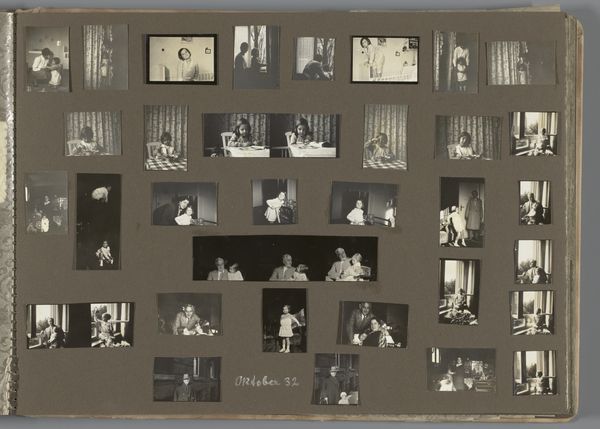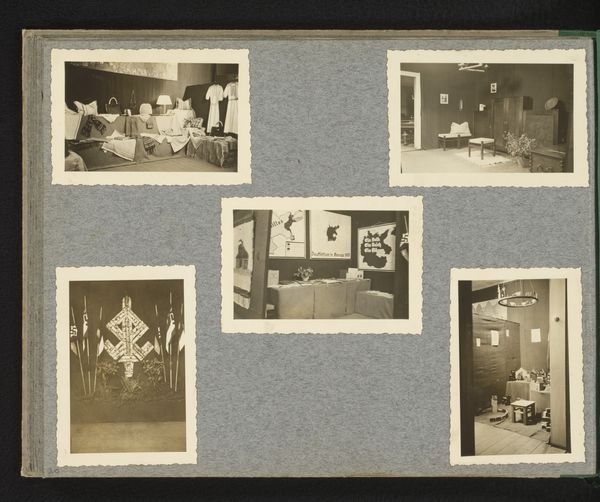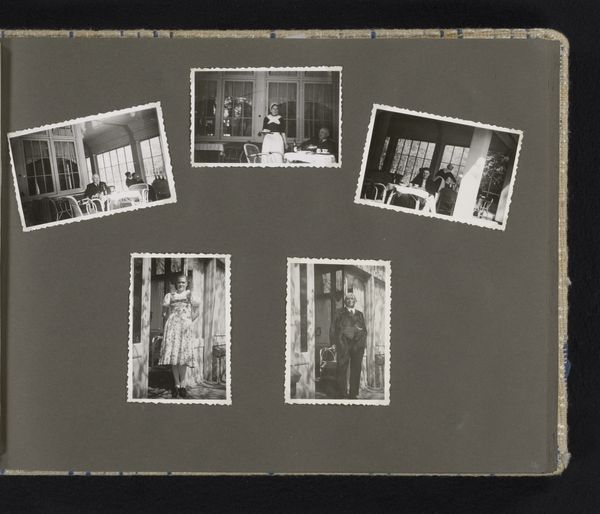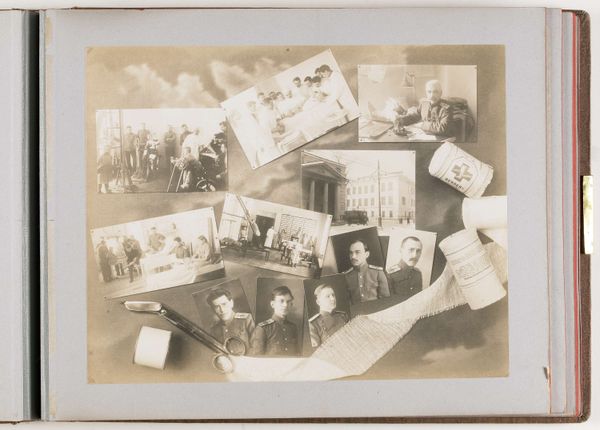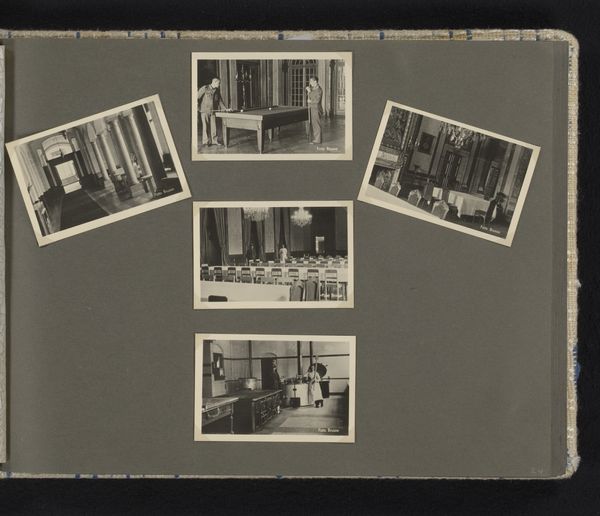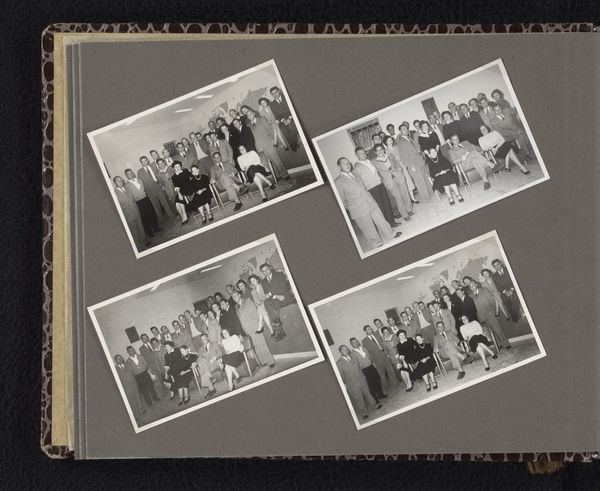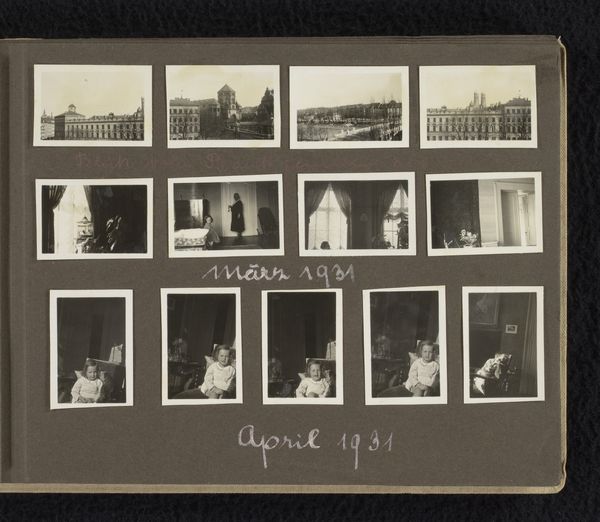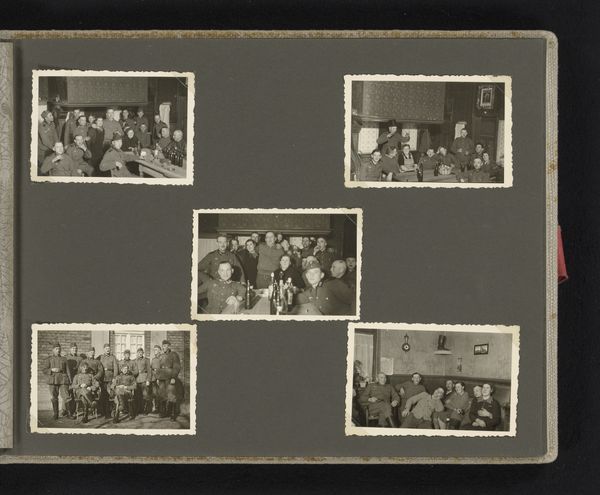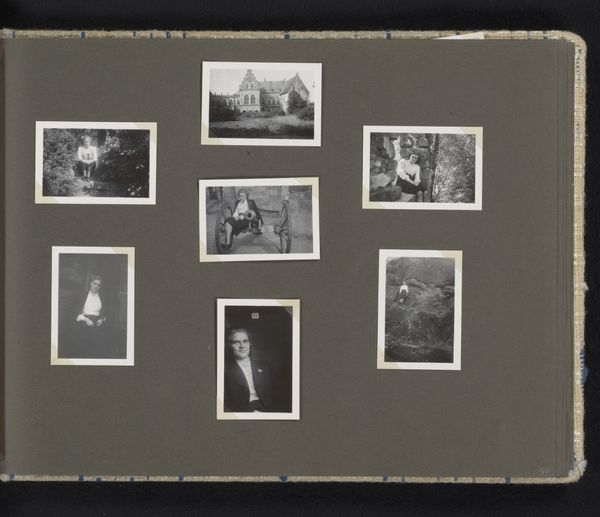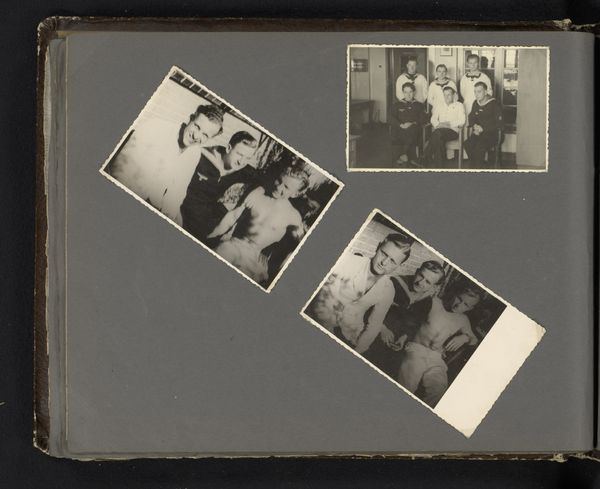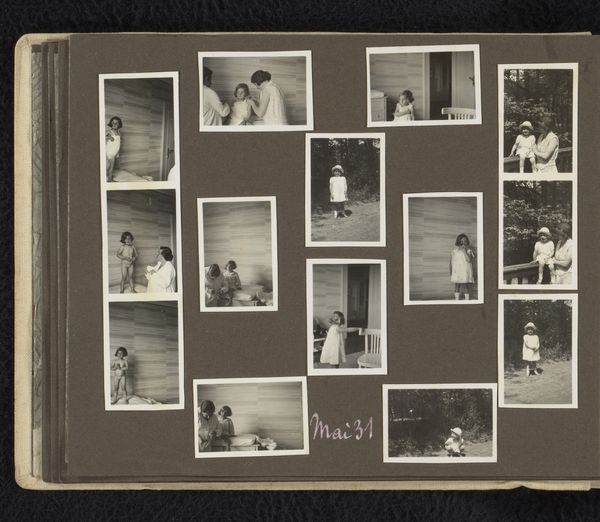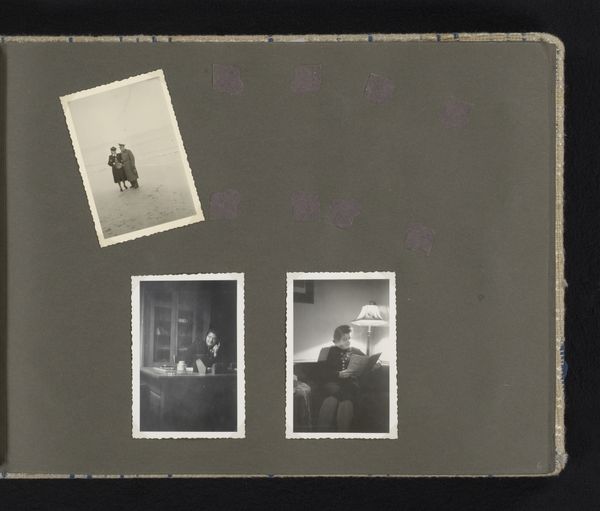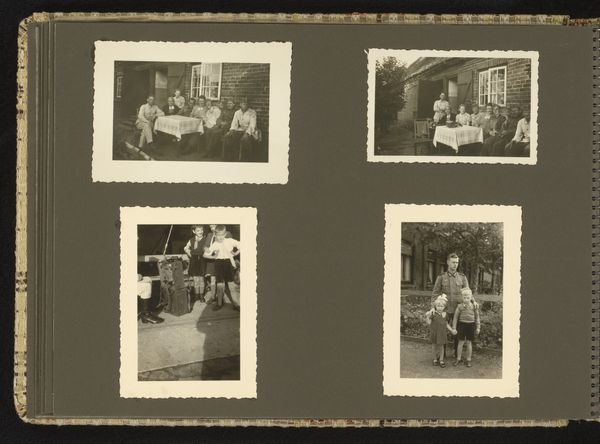
Isabel Wachenheimer tijdens de voorbereidingen om op reis te gaan, juli 1931-februari 1932, München Possibly 1931 - 1937
0:00
0:00
photography, photomontage, gelatin-silver-print, albumen-print
#
portrait
#
paper non-digital material
#
self-portrait
#
photography
#
photomontage
#
gelatin-silver-print
#
modernism
#
albumen-print
Dimensions: height 27 mm, width 40 mm, height 150 mm, width 210 mm
Copyright: Rijks Museum: Open Domain
Curator: This compelling piece is titled "Isabel Wachenheimer during preparations to travel, July 1931-February 1932, Munich." The collection of photographs, possibly created between 1931 and 1937, shows a child documented through albumen and gelatin silver prints in a kind of photomontage, within a family album. Editor: There's a dreamlike, ephemeral quality to the presentation. All these photographs, pinned as specimens or little butterflies caught behind glass... each little study a question of time itself, isn't it? There's so much loneliness apparent as well. Curator: Precisely, and it makes us ask whose gaze we are looking through. This is a document, seemingly simple and straightforward, that unravels quickly when we think about the social context of the time: Nazi Germany, a Jewish family documenting childhood innocence against a backdrop of mounting persecution. Editor: It speaks volumes, doesn’t it? To privilege domestic life at that historical moment could easily have been considered resistance in plain sight. There’s no dramatic indication of hardship, however, the mere fact that someone documented the child's daily life knowing this imagery might have to serve as a reminder of innocence, family and personal history in the future gives me shivers. Curator: It's such a profound reflection on identity, familial love, and the act of bearing witness through photography. And perhaps, considering it's assembled as a sort of self-portrait in the aggregate, a way for the family to see *themselves*, retain their being in a world that would see them erased. Editor: Yes, it asks who gets to record history, doesn't it? It compels the viewer to ask these crucial questions about power, remembrance, and legacy that linger long after the individual photographs begin to fade. This really speaks to the political importance of something as seemingly personal as a family photo album. Curator: A quiet resistance through documentation; this offers crucial historical and sociological insight. I walk away with a deepened sense of how daily lives speak volumes when framed within larger narratives of oppression. Editor: And for me, a painful recognition of the mundane mixed with the looming threat, transforming snapshots into artifacts of profound significance.
Comments
No comments
Be the first to comment and join the conversation on the ultimate creative platform.
